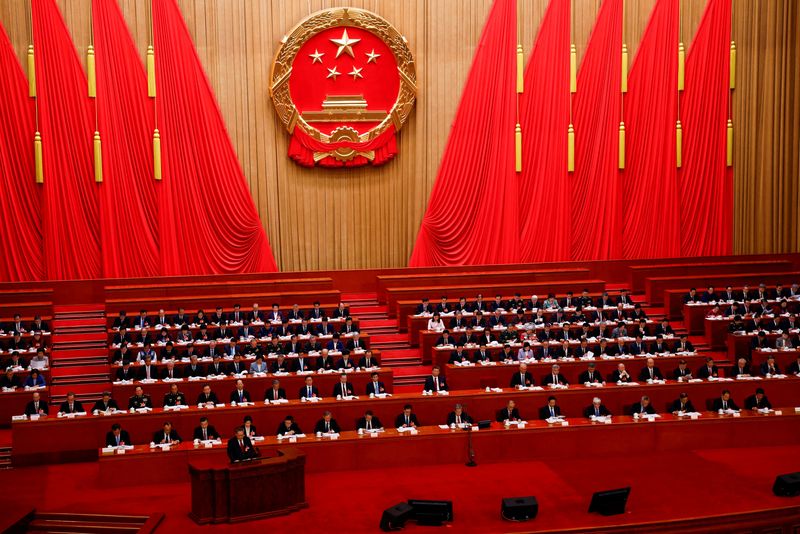BEIJING (Reuters) – China announced additional fiscal stimulus on Wednesday, focusing on boosting consumption and mitigating the effects of an escalating trade war with the United States. Premier Li Qiang, speaking at the opening of China’s parliamentary session, highlighted the challenges posed by a rapidly changing global environment. “Changes unseen in a century are unfolding across the world at a faster pace,” Li stated, noting potential impacts on China’s trade, science, and technology sectors.
The ongoing trade conflict with the U.S. threatens China’s industrial base amid sluggish domestic demand and a struggling property sector. President Donald Trump’s administration has imposed tariffs on numerous countries, disrupting the global trade order that China’s economy depends on.
There is increasing pressure on Chinese officials to implement consumer-focused stimulus to counter deflationary trends and reduce reliance on exports and investment. In Premier Li’s report, “consumption” was mentioned 31 times, up from 21 last year, while “technology” appeared 28 times, slightly up from 26 in 2024.
“For the first time, boosting consumption has been elevated to the top priority among 2025’s major tasks, displacing technology,” said Tilly Zhang, a technology analyst at Gavekal Dragonomics. Despite this, China has previously aimed for a consumer-driven growth model without significant progress, and investors remain cautious.
The CSI AI Industry Index rose by 1.1%, and the Tech Index climbed 3%. The consumer discretionary sector increased by 0.6%. The emergence of artificial intelligence platform Deepseek has positively influenced market sentiment this year.
Premier Li outlined economic targets, including a roughly 5% growth goal for 2025 and a budget deficit plan of around 4% of GDP. Additionally, Beijing plans to issue 1.3 trillion yuan ($179 billion) in ultra-long special treasury bonds, up from 1 trillion yuan in 2024. Local governments will be permitted to issue 4.4 trillion yuan in special debt, up from 3.9 trillion yuan.
Analysts suggest these measures aim to cushion tariff impacts. “We also expect the authorities to adjust the budget by mid-year if growth momentum is hit by trade disputes,” ANZ analysts noted.
Despite a 300 billion yuan allocation to a consumer subsidy scheme, Li’s speech lacked substantial household support. “That’s been super-successful in boosting spending on those types of goods,” said Harry Murphy Cruise of Moody’s Analytics, but overall spending remains weak.
Welfare adjustments were minimal, with the monthly minimum pension rising by 20 yuan to 143 yuan ($20). Economists urge deeper reforms to bolster welfare and restructure resource allocation.
Chinese producers, facing weak domestic demand and tougher U.S. conditions, are seeking alternative export markets, risking price wars and political backlash. Washington has added tariffs on Chinese goods, prompting retaliation from Beijing.
“We worry that they will add another 10% and then another 10%,” said Dave Fong, a manufacturer in China. Last year’s 5% growth, achieved with late stimulus, was among the world’s fastest but barely felt domestically.
While China enjoys a significant trade surplus, many citizens face unstable jobs and incomes as companies cut costs to remain competitive abroad. “Further expanding the trade surplus is no longer a good strategy, so we need to rely on internal demand for growth,” said Andrew Xia, chief economist at Shangshan Capital Group.
— news from Investing.com
